Toothpaste cleaning hacks – who knew that little tube of minty freshness held so much power beyond just keeping our pearly whites sparkling? I’m constantly amazed by the versatility of everyday items, and toothpaste is definitely a hidden gem when it comes to tackling household chores.
For generations, toothpaste has been a staple in our bathrooms, primarily for oral hygiene. But its cleaning potential extends far beyond that! Think about it: toothpaste is designed to gently polish and remove stains from a delicate surface (our teeth). This makes it perfect for a variety of cleaning tasks around the house.
Are you tired of stubborn stains on your bathroom fixtures? Frustrated with scuffed shoes that look like they’ve seen better days? Or maybe you’re just looking for eco-friendly and budget-friendly alternatives to harsh chemical cleaners? Then you’re in the right place! This article is packed with incredible toothpaste cleaning hacks that will save you time, money, and a whole lot of elbow grease. I’m going to share my favorite DIY tricks that will have your home sparkling in no time, all thanks to that humble tube of toothpaste. Get ready to be amazed!
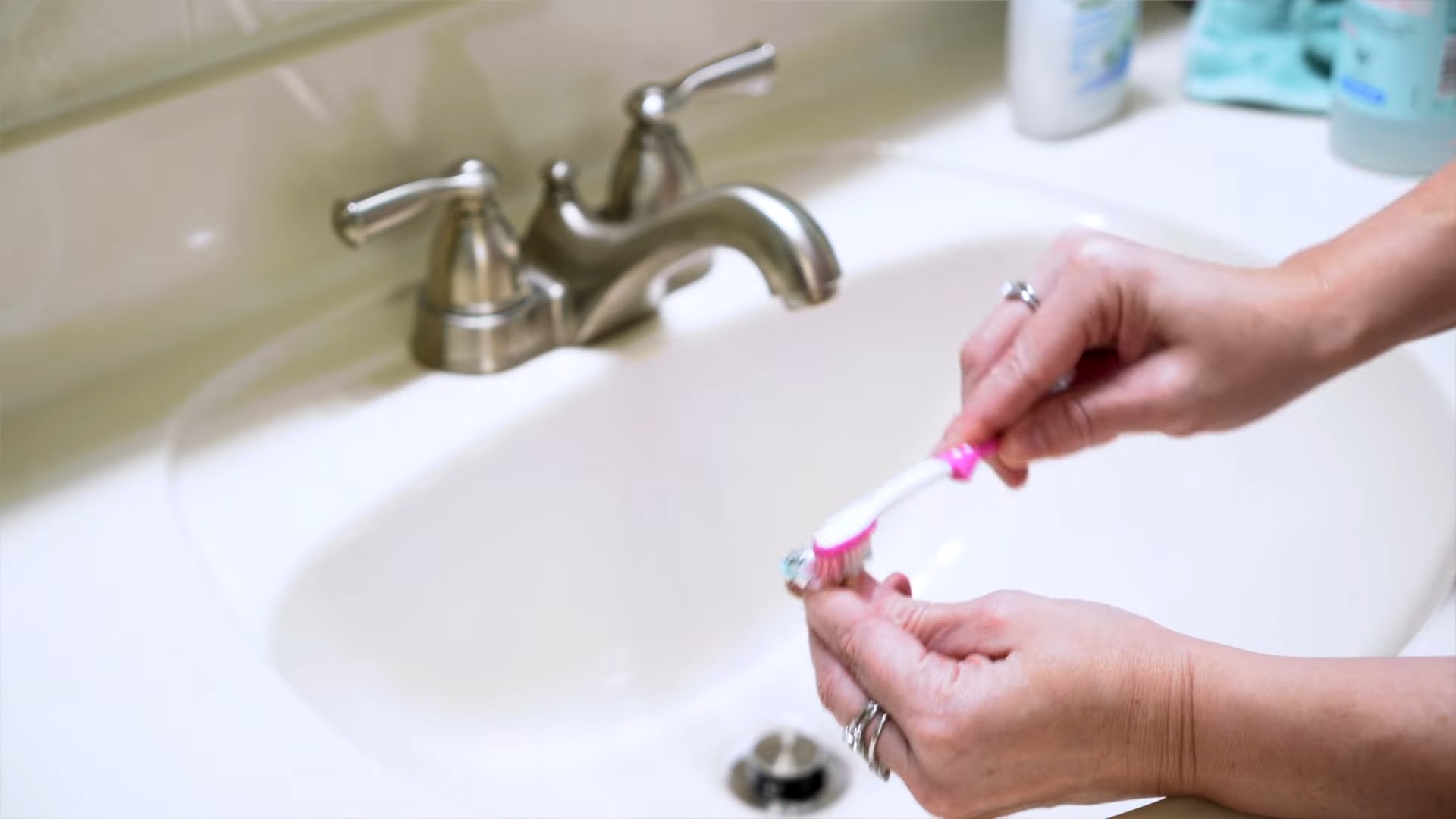
DIY Cleaning Hacks with Toothpaste: Beyond Brushing Your Teeth!
Hey everyone! Did you know that your trusty tube of toothpaste is more than just a breath-freshener? It’s actually a surprisingly versatile cleaning agent! I’ve been experimenting with toothpaste cleaning hacks for a while now, and I’m excited to share some of my favorite and most effective tricks with you. Get ready to be amazed at what this everyday item can do!
What Kind of Toothpaste Should I Use?
Before we dive in, let’s talk toothpaste types. For most of these hacks, you’ll want to use a plain, white, non-gel toothpaste. Avoid the colored, striped, or gel varieties, as they might contain ingredients that could stain or damage certain surfaces. A basic, fluoride toothpaste is your best bet. Also, steer clear of whitening toothpastes for delicate surfaces, as the abrasive agents can be too harsh.
Hack #1: Polishing Silverware and Jewelry
Tarnished silverware and jewelry can look dull and lifeless. But don’t worry, toothpaste to the rescue! This is one of my go-to methods for bringing back the shine.
What You’ll Need:
* White, non-gel toothpaste
* Soft cloth or toothbrush
* Warm water
* Clean, dry cloth
Step-by-Step Instructions:
1. Apply Toothpaste: Squeeze a small amount of toothpaste onto a soft cloth or an old, soft-bristled toothbrush.
2. Gently Rub: Gently rub the toothpaste onto the tarnished silverware or jewelry. For intricate designs, the toothbrush will be your best friend to get into all those nooks and crannies. Be gentle! You don’t want to scratch the surface.
3. Rinse Thoroughly: Rinse the item thoroughly with warm water, making sure to remove all traces of toothpaste.
4. Dry and Buff: Use a clean, dry cloth to dry the item completely and buff it to a brilliant shine. You’ll be amazed at the difference!
Hack #2: Removing Water Rings from Wood Furniture
Ugh, water rings! They’re the bane of every furniture lover’s existence. But don’t despair, toothpaste can help! This works best on finished wood surfaces. Always test in an inconspicuous area first to make sure it doesn’t damage the finish.
What You’ll Need:
* White, non-gel toothpaste
* Soft cloth
* Damp cloth
* Furniture polish (optional)
Step-by-Step Instructions:
1. Apply Toothpaste: Apply a small amount of toothpaste directly to the water ring.
2. Gently Rub: Gently rub the toothpaste into the ring using a soft cloth. Use a circular motion. Don’t apply too much pressure.
3. Wipe Clean: Wipe away the toothpaste with a damp cloth.
4. Dry and Polish: Dry the area thoroughly with a clean cloth. If desired, apply furniture polish to restore the shine.
Hack #3: Cleaning Chrome Fixtures
Chrome fixtures in your bathroom and kitchen can easily become dull and covered in water spots. Toothpaste is a fantastic way to restore their sparkle.
What You’ll Need:
* White, non-gel toothpaste
* Soft cloth or sponge
* Warm water
* Clean, dry cloth
Step-by-Step Instructions:
1. Apply Toothpaste: Apply a small amount of toothpaste to a soft cloth or sponge.
2. Rub the Fixture: Rub the toothpaste onto the chrome fixture, focusing on areas with water spots or grime.
3. Rinse Thoroughly: Rinse the fixture thoroughly with warm water.
4. Dry and Shine: Dry the fixture with a clean, dry cloth to reveal its sparkling shine.
Hack #4: Removing Scuff Marks from Shoes
Scuff marks on shoes, especially leather or sneakers, can make them look worn and old. Toothpaste can help remove those unsightly marks and restore your shoes to their former glory.
What You’ll Need:
* White, non-gel toothpaste
* Soft cloth or toothbrush
* Warm water
* Clean, dry cloth
Step-by-Step Instructions:
1. Apply Toothpaste: Apply a small amount of toothpaste to a soft cloth or an old toothbrush.
2. Gently Rub: Gently rub the toothpaste onto the scuff mark using a circular motion.
3. Wipe Clean: Wipe away the toothpaste with a damp cloth.
4. Dry and Buff: Dry the area with a clean, dry cloth. For leather shoes, you may want to apply a leather conditioner afterward to keep them supple.
Hack #5: Cleaning Your Iron
A dirty iron can leave marks on your clothes. Toothpaste can help clean the soleplate and remove any residue.
What You’ll Need:
* White, non-gel toothpaste
* Soft cloth
* Damp cloth
Important Note: Make sure your iron is unplugged and completely cool before starting this process!
Step-by-Step Instructions:
1. Apply Toothpaste: Apply a small amount of toothpaste to the cool soleplate of the iron.
2. Rub Gently: Gently rub the toothpaste over the soleplate with a soft cloth.
3. Wipe Clean: Wipe away the toothpaste with a damp cloth, making sure to remove all traces of residue.
4. Dry Thoroughly: Dry the soleplate thoroughly with a clean cloth before using the iron again.
Hack #6: Removing Crayon Marks from Walls
Kids and crayons… a classic combination that often leads to artwork on your walls! Toothpaste can help you remove those colorful masterpieces without damaging the paint.
What You’ll Need:
* White, non-gel toothpaste
* Soft cloth
* Damp cloth
Step-by-Step Instructions:
1. Apply Toothpaste: Apply a small amount of toothpaste directly to the crayon marks.
2. Gently Rub: Gently rub the toothpaste over the crayon marks with a soft cloth.
3. Wipe Clean: Wipe away the toothpaste with a damp cloth. You may need to repeat this process a few times for stubborn marks.
4. Dry the Wall: Dry the wall with a clean cloth.
Hack #7: Defogging Bathroom Mirrors
Tired of foggy bathroom mirrors after a hot shower? Toothpaste can help with that too!
What You’ll Need:
* White, non-gel toothpaste
* Soft cloth
* Damp cloth
Step-by-Step Instructions:
1. Apply Toothpaste: Apply a thin layer of toothpaste to the entire surface of the mirror.
2. Rub it In: Rub the toothpaste into the mirror with a soft cloth.
3. Wipe Clean: Wipe away the toothpaste with a damp cloth.
4. Dry and Buff: Dry the mirror with a clean cloth and buff it to a shine. Now you’ll have a fog-free mirror after every shower!
Hack #8: Cleaning Piano Keys
Piano keys can get grimy and yellowed over time. Toothpaste can help restore their original brightness.
What You’ll Need:
* White, non-gel toothpaste
* Soft, damp cloth
* Clean, dry cloth
Important Note: Be very careful not to get any moisture inside the piano.
Step-by-Step Instructions:
1. Dampen the Cloth: Lightly dampen a soft cloth with water. Make sure it’s not dripping wet.
2. Apply Toothpaste: Apply a small amount of toothpaste to the damp cloth.
3. Gently Wipe: Gently wipe each key with the cloth, being careful not to get any moisture between the keys.
4. Wipe Clean: Wipe each key with a clean, dry cloth to remove any toothpaste residue.
5. Repeat if Necessary: Repeat the process if necessary for stubborn stains.
Hack #9: Removing Stains from Clothing (Use with Caution!)
While toothpaste can sometimes help remove stains from clothing, it’s important to use it with caution and test it in an inconspicuous area first. This works best on white or light-colored fabrics.
What You’ll Need:
* White, non-gel toothpaste
* Soft cloth or toothbrush
* Cold water
Step-by-Step Instructions:
1. Apply Toothpaste: Apply a small amount of toothpaste directly to the stain.
2. Gently Rub: Gently rub the toothpaste into the stain using a soft cloth or toothbrush.
3. Rinse with Cold Water: Rinse the area thoroughly with cold water.
4. Launder as Usual: Launder the garment as usual
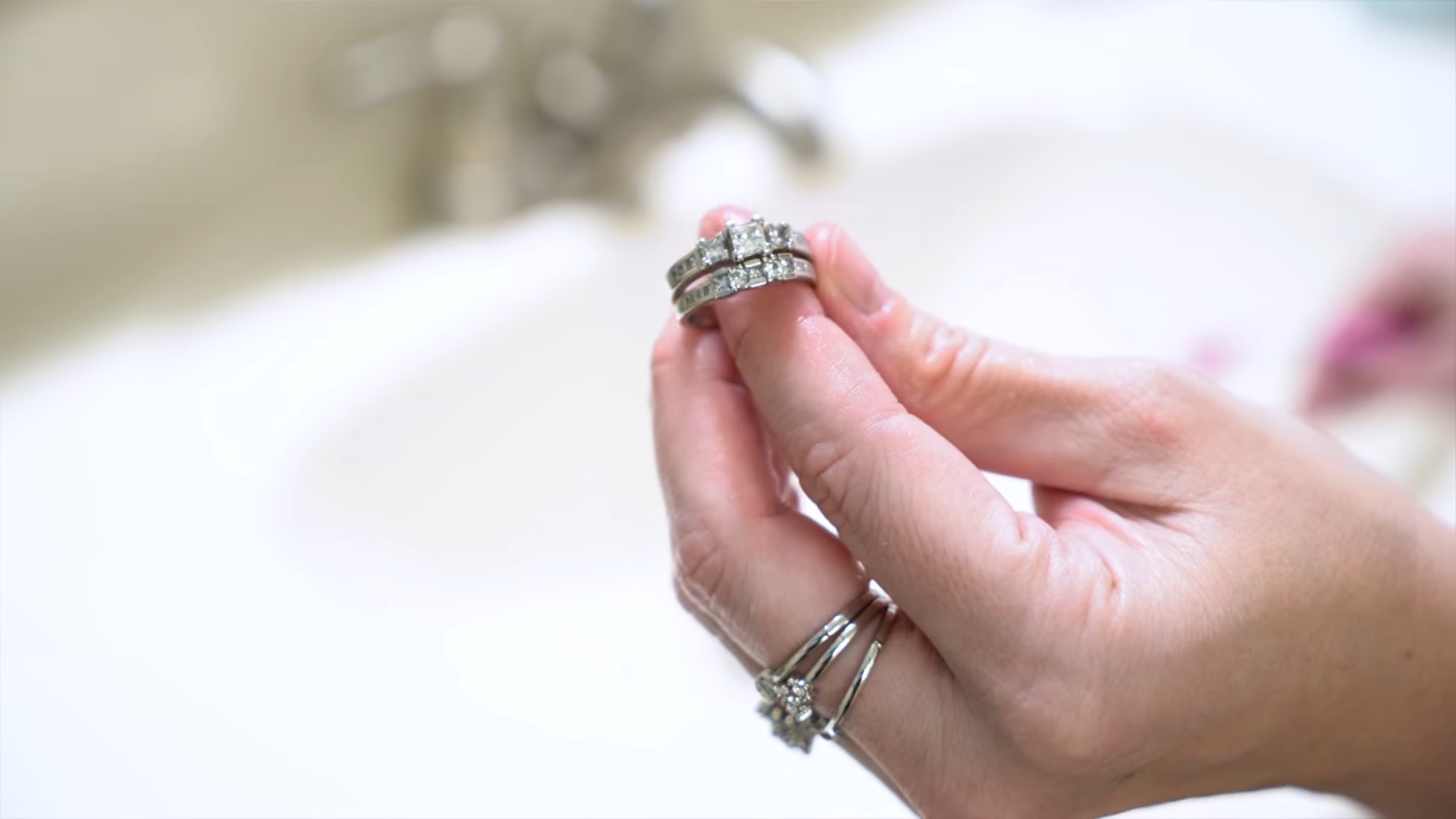
Conclusion
So, there you have it! Unlocking the surprising power of toothpaste extends far beyond just oral hygiene. This simple, readily available household item is a veritable Swiss Army knife for cleaning, offering a cost-effective and surprisingly effective alternative to many commercial cleaning products. From restoring the shine to your jewelry to banishing stubborn stains on your clothes, the versatility of toothpaste is truly remarkable.
Why is this DIY trick a must-try? Because it’s practical, economical, and readily accessible. You likely already have a tube of toothpaste in your bathroom, meaning you can start experimenting with these cleaning hacks right now, without a trip to the store or breaking the bank. Think about the money you’ll save on specialized cleaners, the reduced exposure to harsh chemicals, and the satisfaction of transforming everyday items with a simple dab of paste.
But the benefits don’t stop there. The mild abrasive properties of toothpaste make it ideal for gently scrubbing away grime and restoring surfaces without causing damage. It’s perfect for delicate items like silver jewelry or removing scuff marks from leather shoes. Plus, the fresh scent of toothpaste can leave your cleaned items smelling clean and revitalized.
Ready to take your cleaning game to the next level? Here are a few suggestions and variations to get you started:
* **For stubborn stains on clothing:** Mix a small amount of toothpaste with water to create a paste. Apply the paste to the stain, gently rub it in, and let it sit for a few minutes before rinsing thoroughly. Always test on an inconspicuous area first to ensure colorfastness.
* **For cleaning sneakers:** Use an old toothbrush to scrub toothpaste onto the rubber soles and canvas areas of your sneakers. Rinse with water and let them air dry for sparkling clean shoes.
* **For removing water rings from wood furniture:** Apply a small amount of non-gel toothpaste to a soft cloth and gently rub it onto the water ring in a circular motion. Wipe away the excess toothpaste with a damp cloth and buff the area dry.
* **For polishing chrome fixtures:** Apply a small amount of toothpaste to a soft cloth and rub it onto the chrome fixtures. Rinse with water and buff dry for a brilliant shine.
* Experiment with different types of toothpaste: While plain white toothpaste is generally recommended for most cleaning tasks, you can experiment with different types to see what works best for you. For example, whitening toothpaste may be more effective at removing stains, while gel toothpaste may be gentler on delicate surfaces.
We’re confident that once you experience the cleaning power of toothpaste, you’ll be amazed at its versatility and effectiveness. So, ditch the expensive cleaners and embrace this simple, yet powerful DIY trick.
We encourage you to try these toothpaste cleaning hacks and share your experiences with us! Let us know which tips worked best for you, any variations you discovered, and any other creative uses you found for this everyday essential. Your feedback will help us continue to explore the amazing potential of toothpaste and share even more helpful tips with our readers. Don’t forget to share your before and after photos on social media using #ToothpasteCleaningHacks – we can’t wait to see your sparkling results!
Frequently Asked Questions (FAQ)
Is it safe to use toothpaste on all surfaces?
While toothpaste is generally safe for most surfaces, it’s always a good idea to test it on an inconspicuous area first, especially on delicate or sensitive materials. Avoid using toothpaste on porous surfaces like unsealed wood or natural stone, as it can be difficult to remove and may cause staining. Also, avoid using gel toothpaste on surfaces where you need a mild abrasive, as it lacks the necessary grit. Always use a soft cloth or brush to avoid scratching the surface you’re cleaning.
What type of toothpaste is best for cleaning?
Plain white toothpaste, without any added gels, colors, or whitening agents, is generally the best choice for cleaning. These types of toothpaste contain mild abrasives that help to scrub away dirt and grime without damaging surfaces. Avoid using gel toothpaste, as it lacks the necessary abrasive properties for effective cleaning. Whitening toothpaste can be used for removing stains, but be sure to test it on an inconspicuous area first, as it may be more abrasive than plain white toothpaste.
Can I use toothpaste to clean electronics?
It is generally not recommended to use toothpaste to clean electronic devices, especially screens. The abrasive properties of toothpaste can scratch the screen or damage the delicate components inside the device. Instead, use a microfiber cloth and a screen cleaner specifically designed for electronics. If you must use toothpaste, apply it very sparingly to a soft cloth and gently wipe the affected area. Be sure to remove all traces of toothpaste with a damp cloth and dry thoroughly.
How do I remove toothpaste residue from surfaces?
Removing toothpaste residue is usually quite simple. Use a damp cloth to wipe away the excess toothpaste, rinsing the cloth frequently. For stubborn residue, you can use a mild soap solution to help loosen the toothpaste. Be sure to dry the surface thoroughly after removing the toothpaste to prevent water spots.
Can toothpaste remove scratches from glass or plastic?
Toothpaste can sometimes help to minimize the appearance of minor scratches on glass or plastic, but it’s not a guaranteed solution. The abrasive properties of toothpaste can help to buff out the edges of the scratch, making it less noticeable. However, it’s important to use a very fine-grit toothpaste and apply it gently to avoid causing further damage. Test on an inconspicuous area first. For deeper scratches, it’s best to consult a professional.
Is toothpaste effective for cleaning jewelry?
Yes, toothpaste is an effective and gentle way to clean jewelry, especially silver. Apply a small amount of toothpaste to a soft cloth or toothbrush and gently rub it onto the jewelry. Rinse thoroughly with water and dry with a soft cloth. Avoid using toothpaste on delicate gemstones or pearls, as it can damage their surface. For these types of jewelry, it’s best to use a jewelry cleaner specifically designed for delicate materials.
Can I use toothpaste to remove stains from clothing?
Toothpaste can be effective for removing certain types of stains from clothing, such as ink, lipstick, or food stains. Apply a small amount of toothpaste to the stain, gently rub it in, and let it sit for a few minutes before rinsing thoroughly. Always test on an inconspicuous area first to ensure colorfastness. Avoid using toothpaste on delicate fabrics like silk or wool, as it can damage the fibers.
How often should I use toothpaste for cleaning?
The frequency of using toothpaste for cleaning depends on the specific task and the surface you’re cleaning. For everyday cleaning tasks like polishing chrome fixtures or cleaning sneakers, you can use toothpaste as needed. For more delicate tasks like cleaning jewelry or removing scratches from glass, it’s best to use toothpaste sparingly and only when necessary. Always test on an inconspicuous area first and avoid over-cleaning, as this can damage the surface.
Does the brand of toothpaste matter for cleaning?
Generally, the brand of toothpaste doesn’t matter as much as the type of toothpaste. As long as you’re using plain white toothpaste without any added gels, colors, or whitening agents, you should be able to achieve good results. However, some brands may have slightly different abrasive properties, so it’s always a good idea to test on an inconspicuous area first to see how it performs.
Are there any surfaces I should absolutely avoid cleaning with toothpaste?
Yes, there are certain surfaces that you should absolutely avoid cleaning with toothpaste. These include:
* **Porous surfaces:** Unsealed wood, natural stone, and other porous materials can absorb toothpaste, making it difficult to remove and potentially causing staining.
* **Delicate gemstones and pearls:** The abrasive properties of toothpaste can damage the surface of these materials.
* **Electronic screens:** Toothpaste can scratch the screen or damage the delicate components inside the device.
* **Painted surfaces:** Toothpaste can dull or scratch painted surfaces.
Always err on the side of caution and test on an inconspicuous area first before using toothpaste to clean any surface.


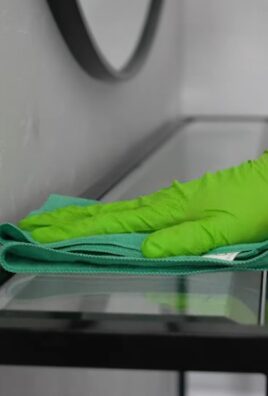
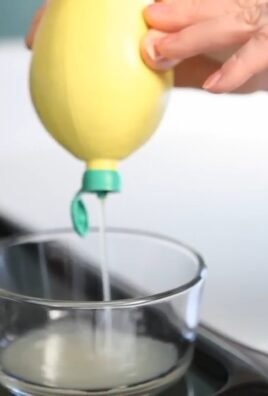
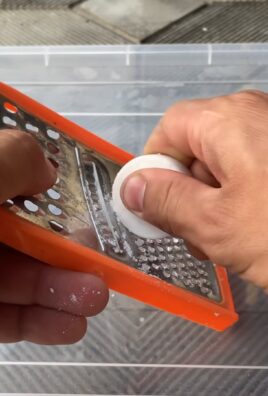
Leave a Comment